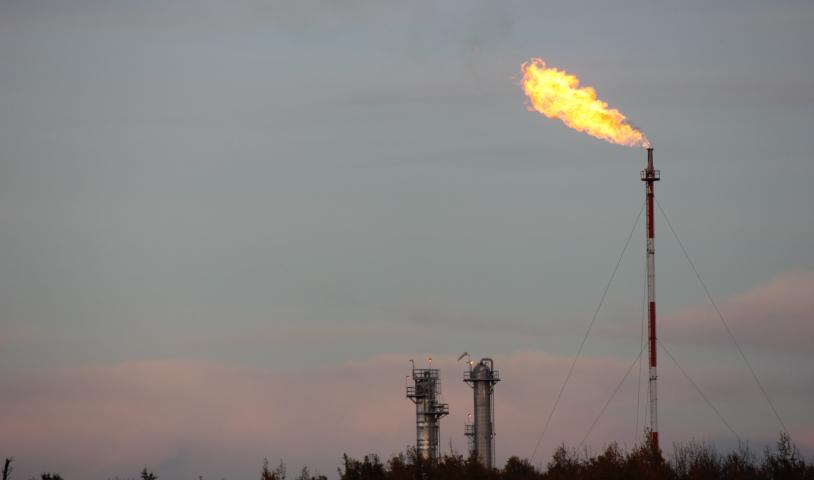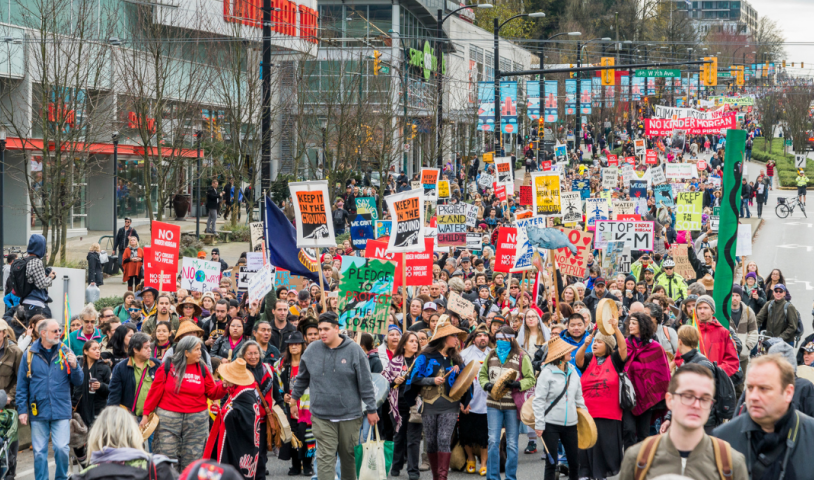New oil pipeline would triple capacity
Friday, April 13, 2012
Proposal for route to Burnaby would fill 25 to 30 tankers monthly
Kinder Morgan Energy's oil pipeline expansion plans grew even larger Thursday after the company received huge commitments from Asian customers.
The new plans would ship enough crude oil from Alberta to fill 25 to 30 tankers a month through the company's Westridge, Burnaby terminal.
The proposed expansion of the existing Alberta-to-Metro Vancouver pipeline, which Kinder Morgan wants operational by 2017, is to cost $5 billion.
It will increase pipeline capacity for crude by 550,000 barrels a day, to 850,000 barrels from the current 300,000 barrels a day.
The expansion is bound to be controversial; Kinder Morgan now plans to construct as much new capacity as Enbridge Inc. has proposed for its contentious Northern Gateway pipeline, said Wilderness Committee campaigner Ben West.
"This is now the biggest proposal," said West. "A bigger pipeline means bigger opposition."
Texas-based Kinder Morgan made the announcement after completing a so-called "open season" to seek binding commitments from potential pipeline customers to book capacity on the pipeline.
The company received more commitments than initially anticipated - enough to ship 660,000 barrels a day for a 20-year term. It has three markets for the oil: Metro Vancouver, Washington state and offshore exports. Most of the customer commitments came from Asia, said Kinder Morgan Canada president Ian Anderson.
"Most of these commitments are for movements via our Westridge terminal - heavy oil movements through Westridge onto tankers. We will be working diligently with all the local communities and environ-mental interests around those issues and concerns," he said in a telephone interview from Calgary.
"This level of commitment will equate to approximately 25 to 30 tankers per month. Today we are moving anywhere from five to 10."
Anderson said the Trans Mountain proposal has attracted so much interest from customers because it offers access to new markets in Asia through a facility that already exists.
"The facilities are there today. The port is there today, the pilots, the tug operators, the first-responders are all there. I think there is a belief that that has merit and expansion of existing infrastructure is a feasible way to go."
Port Metro Vancouver harbourmaster Yoss Leclerc said the port could easily handle the extra tankers.
"Absolutely," he said. "It's controlled, monitored and we have the windows."
Leclerc said the port has three windows per day - 20 minutes to over an hour when there is "slack water" or no currents - in which tankers and other heavy vessels can move under the Second Narrows Bridge.
He said the area under the bridge doesn't require any dredging with the current tankers, but if the ships are bigger and dredging is required, "it would require a comprehensive community and environmental consultation.
"But I don't think it would be a big dredging."
Piloting the tankers is not expected to pose any unusual risks, said Kevin Obermeyer, chief executive officer of the Pacific Pilotage Authority. The authority has already con-ducted trials aboard a tanker in Georgia Strait to test procedures that have been in place since 2010.
He said two pilots are on board tankers and they carry with them their own computer with all the needed navigational inputs in the event there is a power failure aboard the ship.
"The worst-case scenario would be a tanker with a full hard-over rudder failure [when the rudder, turned as far as it can go in one direction, gets stuck in that position]. With the tugs that we are using and the systems we have in place, we can straighten that vessel out and carry right on under the bridge safely with the rudder hard over."
He said there has never been a hard-over rudder failure on the West Coast. The tankers coming into the inlet would not be large enough to refer to as super-tankers, he said.
Ernie George, director of treaty, lands and resources for the Tsleil-Waututh Nation, which is on the Burrard Inlet, said their opposition to the pipeline expansion remains unchanged.
"We're opposed to the whole expansion of the project. The risk is too great," he said referring to the possibility of an oil spill in Burrard Inlet.
However, George didn't want to comment further until Kinder Morgan has finished consulting with his first nation community over the issue.
The next step for Kinder Morgan, Anderson said, is to seek approval from the National Energy Board this summer for the commercial terms it has entered into with customers.
Detailed design and routing work, along with consultations with communities and first nations, is to take place over the next 18-24 months.
Anderson expects Kinder Morgan to file an official proposal to build the pipeline with the National Energy Board in late 2013. If it receives approval by 2015, construction could be completed by 2017. He said two-thirds of the $5-billion cost would be spent in B.C.
Canadian oil producers have been urging development of a line to let them tap high-paying Asian markets and U.S. West Coast refineries. The majority of Canada's oil exports now flow to the U.S. Midwest, where a glut of crude at the Cushing, Okla., storage hub has depressed prices.
The 1,150-kilometre Trans Mountain pipeline was originally built in 1953 to bring oil to southwestern B.C.
PROPOSED TRANS MOUNTAIN PIPELINE EXPANSION
Kinder Morgan, on Thursday, launched its plan to twin its 1,150-kilometre pipeline from Edmonton to Vancouver, which will increase its overall capacity to 850,000 barrels of oil per day from 300,000 barrels per day today.





